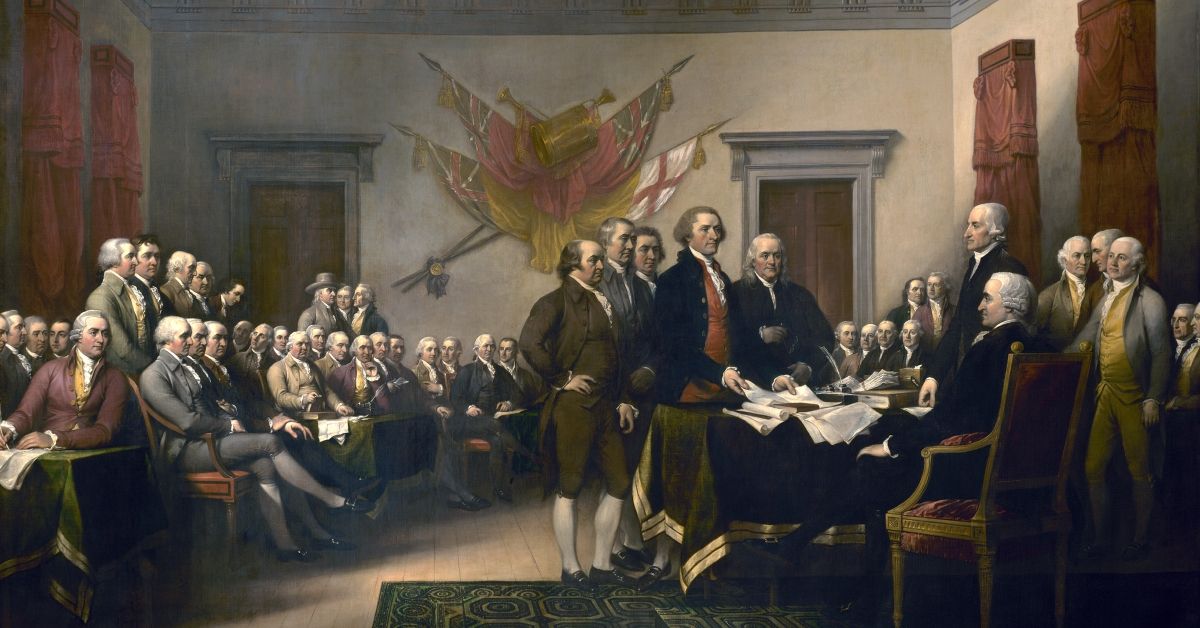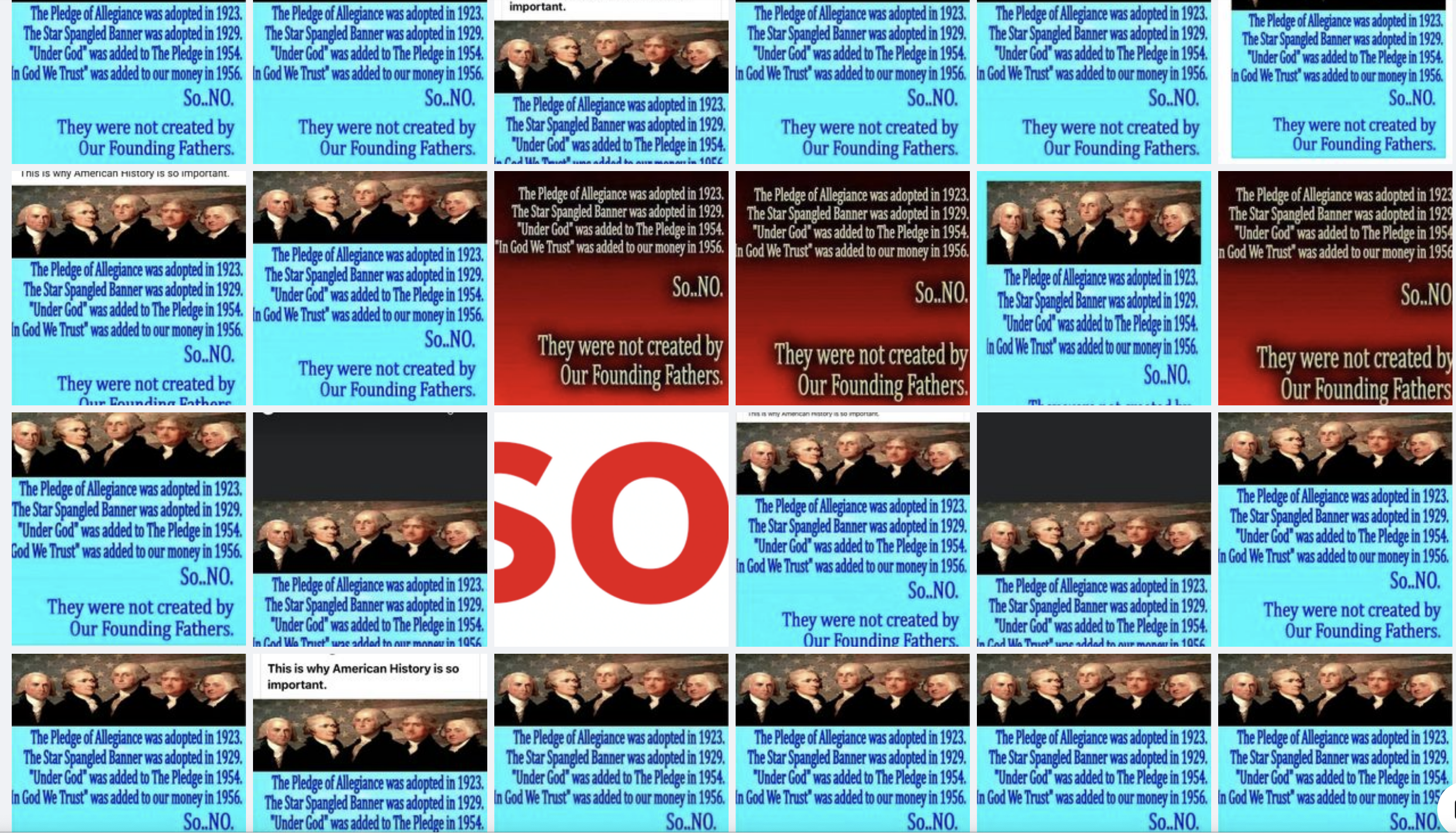In the summer of 2021, we received inquiries from Snopes readers about the accuracy of a widely-shared meme insisting that several totems of American civic and political culture, such as the national anthem and the Pledge of Allegiance, were in fact relatively recent inventions, and thus had no link to the "Founding Fathers," whose actions and intentions are often regarded as sacrosanct in the United States.
The meme consisted of a banner image featuring Thomas Jefferson, John Adams, George Washington, James Madison, and Alexander Hamilton, along with the following text:
The Pledge of Allegiance was adopted in 1923.
The Star Spangled Banner was adopted in 1929.
"Under God" was added to The Pledge in 1954.
"In God We Trust" was added to our money in 1956.So...NO.
They were not created by our Founding Fathers.
The following screenshot shows a selection of instances of the meme posted to Facebook in 2021, and illustrates its popularity on that platform:
The broad point of the meme is correct — the four totems mentioned were not adopted until many decades after the signing of the Declaration of Independence in 1776, and the Founders did not play a part in their implementation. As such, we are issuing a rating of True.
However, the accuracy of the specific dates listed in the meme was mixed. The following is an assessment of each date and milestone listed in the meme, bearing in mind that the overarching point of the meme remains correct.
'The Pledge of Allegiance Was Adopted in 1923'
The basic format of the pledge was devised by Francis Bellamy, a Christian minister, to mark the occasion of Columbus Day, in October 1892, the 400th anniversary of the Columbian expeditions. An official program for that day's commemorations set out the text of the pledge, to be recited in public school classrooms across the nation:
"I pledge allegiance to my flag, and the republic for which it stands; one nation indivisible, with liberty and justice for all."
After that, two significant changes were made. In June 1923, the American Legion organized a National Flag Conference in Washington, D.C., at which it was decided that the words "my flag" should be replaced with "the flag of the United States," in order to avoid confusion (or subterfuge) on the part of recently-arrived immigrants. This is the development in 1923 to which the meme refers.
That formula of words was formally adopted by Congress in 1942, and the second significant change came in 1954, when the words "Under God" were added (more about which below).
'The Star-Spangled Banner Was Adopted in 1929'
The meme has the right era, but the wrong year. In fact, the U.S. Congress did not formally adopt "The Star-Spangled Banner" as the national anthem until two years later. On March 3, 1931, the following resolution was approved:
"Be it enacted by the Senate and House of Representatives of the United States of America in Congress assembled, That the composition consisting of the words and music known as The Star-Spangled Banner is designated the national anthem of the United States of America."
'"Under God" Was Added to the Pledge in 1954'
The version of the pledge re-adopted by Congress in 1945 is identical to the one now in use, save for two words: "Under God." As the meme correctly points out, that phrase was added on June 14, 1954, as the comparison below illustrates:
'"In God We Trust"' Was Added to Our Money in 1956'
That phrase actually first appeared on U.S. currency as early as 1864, though not as far back as the era of Washington and Adams. As an entry on the official website of the U.S. Treasury Department outlines:
The motto IN GOD WE TRUST was placed on United States coins largely because of the increased religious sentiment existing during the Civil War. Secretary of the Treasury Salmon P. Chase received many appeals from devout persons throughout the country, urging that the United States recognize the Deity on United States coins.
In April 1864, Congress passed a law that "changed the composition of the one-cent coin and authorized the minting of the two-cent coin. The Mint Director was directed to develop the designs for these coins for final approval of the Secretary. IN GOD WE TRUST first appeared on the 1864 two-cent coin."
In the 150 years since then, "In God We Trust" has appeared intermittently on various coins. In 1956 — the year referred to in the meme— it became the official motto of the United States, and the first paper currency bearing the phrase was printed in 1957.
See also from Snopes:



